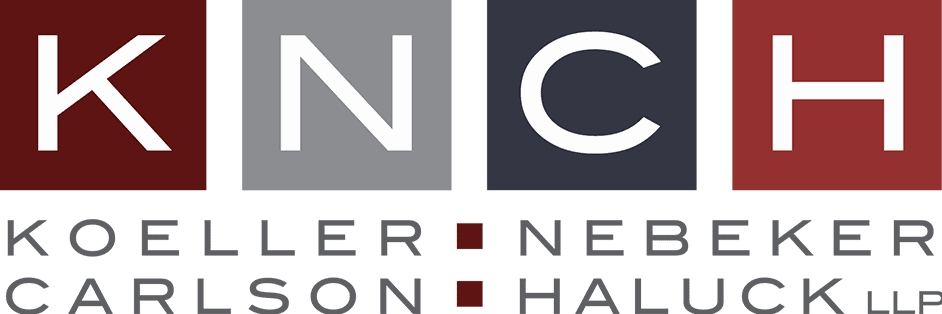The Right Fit is as Important as Having Enough Pieces
The need for workers cannot outweigh sound hiring practices.
Authored by William A. Nebeker, Maxwell K. Shanahan and Anne P. Barber
On top of rising costs for materials, supply chain problems, and increasingly slimmer margins, the U.S. construction industry today is facing a labor shortage. This shortage is an existential threat to many contractors and subcontractors. According to the U.S. Chamber of Commerce’s Commercial Construction Index for the fourth quarter of 2021, 91% of surveyed contractors reported having “moderate to high levels of difficulty” finding skilled workers, while 45% of contractors reported they are turning down work because of these difficulties.
In desperate need of workers to complete the jobs their companies have been hired to do—jobs they will likely be paid for only when completed—panicked contractors and subcontractors may be tempted to take shortcuts in the hiring process. But these shortcuts may come back to haunt them. Whether it be loss of business or legal liability, cutting corners in hiring can lead to a host of headaches for employers.
Fortunately, there are best practices contractors and subcontractors can employ that do not require significant time or resources, but that can reduce the chances that a new employee will cause more problems than they solve.
Lax hiring practices can lead to serious consequences for contractors and subcontractors
When contractors and subcontractors fail to properly vet potential employees, they risk incurring legal liability, performing shoddy work, and damaging both their companies’ reputations in the marketplace and internal cultures.
Many construction jobs are intrinsically dangerous, and even when staffed with the best in the business, risks remain constant. In construction site accidents, workers, and those around them, could lose limbs—and their lives. It is bad enough that an unvetted employee’s misconduct could injure a fellow employee and trigger a workers’ compensation claim against the contractor or subcontractor. But if the unvetted employee’s misconduct injures a third-party nonemployee, that nonemployee might have a personal injury claim against the contractor or subcontractor that will likely lead to litigation and a costly settlement.
But workers’ compensation and personal injury claims aren’t the only kinds of legal claims a contractor or subcontractor could face because of an unvetted employee’s actions on a job site. An unvetted employee may cause legal, financial, and reputation harm to a contractor or subcontractor’s business due to their lack of skill or ability to perform at the expected level. Their shoddy workmanship could lead to construction defect or delay claims by property owners or developers. While perhaps not as costly as third-party personal injury claims, these claims will be unnecessary headaches an already thinly stretched contractor or subcontractor will have to deal with, and will likely be coupled with reputation harm.
As word spreads about the poor performance of a hastily hired employee, a contractor or subcontractor could have to deal with both reputational damage and an unhappy workforce. As for the former, unforgiving clients will be all too quick to post negative online reviews and social media photos about defects or delays caused by poor workmanship. As a result, word will spread quickly that a contractor or subcontractor does not do good work and should be avoided at all costs.
As for the latter, an unvetted employee who performs poorly could take down their entire team. A contractor’s or subcontractor’s employees who’ve invested blood, sweat, and tears into their jobs are unlikely to want to put up with an unvetted employee’s antics. In addition to their concerns about their safety and the safety of everyone else on a job site, those employees are unlikely to trust the unvetted employee or to tolerate management’s excuses for why that employee is still working on job sites. Knowing they can likely land a new job quickly, and perhaps receive more compensation than they do currently, disgruntled—but valued—employees may opt to change jobs instead of continuing to work with an unqualified employee day in and day out.
How contractors and subcontractors can employ best practices in hiring
While contractors and subcontractors may be understandably anxious to start working on projects as quickly as possible, and thus feel the need to staff up as quickly as possible, there’s simply too much risk they’d be assuming by not properly screening potential employees. Luckily, the proper vetting of a potential employee requires neither much time nor money.
First off, background checks and criminal checks are vital—and should be non-negotiable. Contractors and subcontractors need to verify that potential employees are who they say they are and can be trusted. For less than $100 or so, and typically within a day or two, a contractor or subcontractor will know whether a potential employee actually went to the schools they claim to have gone to, worked for the employers they claimed to have worked for, and have criminal histories that could raise red flags.
In addition, potential employees should be given drug tests and asked for at least three references. The reason for the former is self-explanatory: work sites are dangerous and substance use while performing a job courts disaster. As for the latter, we recommend contacting at least two references even though the expectation is that, because a potential employee hand-picked them, they’ll provide glowing reviews. Asking follow-up questions about the potential employee’s temperament, punctuality, skills, and other traits that are relevant to working in the trades is likely to elicit honest feedback—even after a reference provides a glowing review.
Finally, if a potential employee has passed background and criminal checks and a drug test, and their references check out, contractors and subcontractors should consider ways to “try before they buy.” One way to do so is to hire the new employee on a probationary period. This will give the new employee an opportunity to prove their abilities and worth without a long-term commitment—or investment—from their employer.
Once a reliable process for screening potential employees has been established, it should be followed consistently to ensure high-quality performance and workmanship.
An ounce of prevention is worth a pound of future legal fees
Given today’s construction market, we sympathize with contractors and subcontractors who feel they need to hire new employees quickly to staff their jobs in order to keep their businesses afloat. But doing so without properly vetting those potential employees exposes those contractors and subcontractors to risks that could, ironically, sink their businesses.
Look no further than a subcontractor who was so busy that his company was hiring anyone who walked into its office looking for a job. His company hired a particular worker without conducting any background checks or drug tests because the company desperately needed workers. Months into his employment, the worker struck and killed a pedestrian while driving to a job site. Blood tests after the incident revealed the worker was high on drugs and had alcohol in his system when he struck the pedestrian. The subsequent police investigation revealed the worker had a significant criminal record—most of which consisted of drug offenses and vehicular accidents.
This is not a hypothetical story. These events happened recently and are still being litigated. In this case, a hundred dollars’ or so worth of background checks, and a few days’ worth of a delay in the employee coming aboard, would have likely saved the company from significant potential legal liability.
We urge all contractors and subcontractors to properly vet potential employees, no matter how desperate they are to bring those new employees on. The stakes are simply too high to not do so.
William A. Nebeker is a founding partner of Koeller Nebeker Carlson Haluck, LLP, based in the firm’s Phoenix office. His practice areas include Construction Litigation, Auto and Transportation Claims, Product Liability, Hospitality and Premises Liability, and Commercial Injury Claims and Litigation. He can be reached at nebeker@knchlaw.com.
Maxwell K. Shanahan is an associate with Koeller Nebeker Carlson Haluck, LLP, based in the firm’s Phoenix office. His practice areas include Construction Litigation, Catastrophic Injury and Accident Litigation, and Insurance Coverage and Related Matters. He can be reached at maxwell.shanahan@knchlaw.com.
Anne P. Barber is an associate with Koeller Nebeker Carlson Haluck, LLP, based in the firm’s Phoenix office. Her practice areas include Construction Litigation, Catastrophic Injury and Accident Litigation, Hospitality and Premises Liability, Insurance Coverage and Related Matters, and Business and Transaction Law. She can be reached at anne.barber@knchlaw.com.



